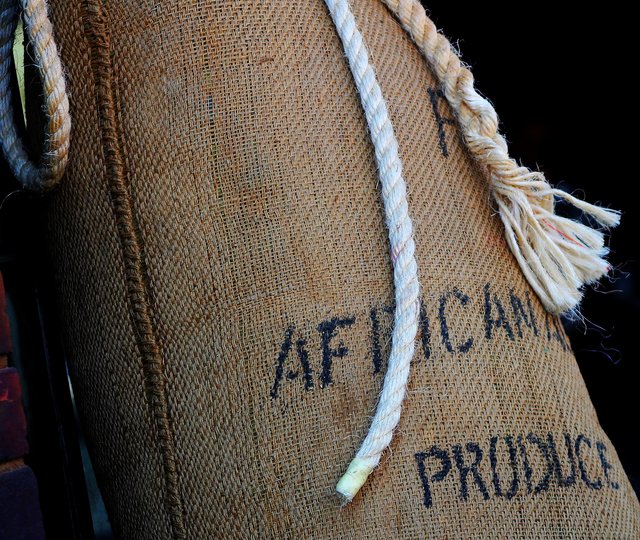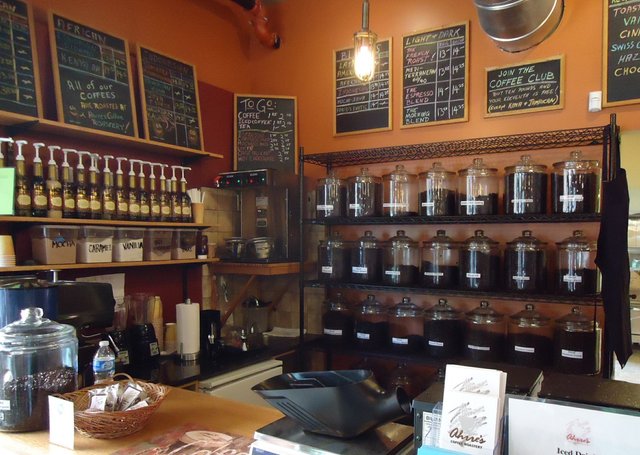Coffee and Chain (3)
Some time ago, in June 2018, the World of Coffee Event was held in the Netherlands and highlighted that although the demand for coffee is expected to double by 2050, the global coffee sector is in danger. This is mainly due to 2 factors: the financial structure of the market and environmental issues ("Due to climate change, if no additional measures are taken, up to 50% of the current coffee producing area will no longer be suitable for coffee production by 2050."), but for today, let’s focus on the financial side.
Consumption increases by an average of 2% per year. If this pace of growth continues, the coffee sector will need 300 million bags of coffee by 2050 (a bag contains 60 kg), which means doubling or even tripling the current annual world production. It was outlined at the event that the present sale of coffee globally has a value of 200 billion dollars each year.

Now this should be good news for coffee farmers, limited supply of high quality Arabica coffee combined with increasing demand should lead to increasing prices. But this has not been the case. Ninety percent of the price you pay for your coffee goes to roaster companies (like Nestlé and JAB) and coffee retailers (such as Starbucks and McDonalds). Less than 10% stays in the producing countries, of which about 6% to the farmers that produce the green coffee (in the case of Arabica coffee). At the same time world coffee prices (the prices when importing green coffee) have fallen by two-thirds in real terms since the early 1980s, and real earnings of coffee farmers have halved. Coffee farmers often operate at a loss and can’t make a living out of coffee alone.
The roaster and retailers
One way to deal with the restrained supply of quality coffee is to substitute lower-grade Arabica with Robusta in coffee blends. This reduces the roaster’s cost levels, and goes mostly unnoticed by the coffee consumers that rely on external cues, such as price, packaging and advertising. A recent survey of ground roast coffee samples labelled as 100% Arabica found that 10% contained significant levels of Robusta coffee. Most consumers do not notice this of course.
Another way found by the roaster and retailers in the coffee market to assure future profits is by the way of mergers and acquisitions.
To the normal consumer, you and me, the coffee market looks highly diversified (we see all those brands and trademarks in the supermarket and elsewhere).

But as growth stagnates among larger companies, they buy the smaller ones and diversify their portfolio to generate growth. Rapid consolidation is transforming the global coffee industry from its traditional leaders, like Nestlé and Jacobs (good for almost 50% of the total demand of green coffee), to retailers, such as Starbucks and McDonald’s. Let’s see how the big players confront this situation to guarantee their profits.
I took the following from the coffee barometer. You can download it here: https://www.solidaridad.nl/sites/solidaridad.nl/files/publications/Coffee%20Barometer%202018.pdf
“The Swiss-based food giant Nestlé, the absolute market leader in the coffee sector, has identified coffee as one of its biggest growth opportunities. It seeks to establish itself firmly in the lucrative and increasingly competitive market for coffee specialties, by diversifying in terms of format, taste and price point. Nestlé surprised the coffee sector in May 2018 by joining forces with Starbucks to jointly innovate and do market launches.
Nestlé’s global dominance of the coffee market is now being challenged by JAB Holding— a German investment firm owned by the Reimann billionaire family. In the past six years, JAB Coffee (part of JAB Holdings) has been building a global coffee empire, investing over $50bn to acquire not only consumer coffee brands but also restaurant chains that sell large volumes of coffee. JAB Coffee is a holding company, with companies and brands managed independently by its subsidiaries. JAB’s strategy is to buy into the most relevant sections of different global markets while keeping the brands and varieties fairly separate.
In January 2018, the JAB-owned coffee company Keurig Green Mountain acquired the softdrink company Dr. Pepper Snapple and named the merged entity Keurig Dr. Pepper. While this might seem an unusual target for a company that has been seeking deals to gain coffee market share against Nestlé, the acquisition fits in well with the strategy to transform coffee into a worthy soda alternative.
This would make coffee an all-day consumption option. Among the firms exploring this, are some of the world’s largest soda brands: Pepsi makes Starbucks’ ready-to-drink coffees (RTD), and Coca-Cola owns Georgia, the biggest RTD coffee brand in the world. Recently, it started expanding RTD in Europe, along with announcing partnerships with Dunkin’ Donuts and McDonald’s in the US.
Next to the coffee giants Nestlé and JAB Coffee, there is no clear number three in the global coffee sector, as the fragmentation of markets in geographical regions and subsegments creates numerous and achievable paths to growth.”
Nestle joining up with Starbucks, JAB buying Dr. Pepper and restaurant chains … what will we see next?
The farmers
Now, where are the farmers in this picture? As we said above: “Coffee farmers often operate at a loss and can’t make a living out of coffee”. This isn’t really any new news. As I matter of fact, I went a bit through my archives because I remembered a report from some 15 years ago stating exactly the same. 2004: Mugged: poverty in your cup. https://www.oxfamamerica.org/publications/mugged-poverty-in-your-coffee-cup/
So how do they do it? What survival strategies are available for small farmers and why do we still get our coffee? But let’s leave this for other issues of this series.
Previous article from coffee series you can find under tag #cafescope.
You can see them all here.
Article was also published on Cafescope
@djimirji up!
?? ;)
I had no idea it's just 10 percent which goes the the origin countries...knew it won't be much, but 10% is just sad..
ahhh dík